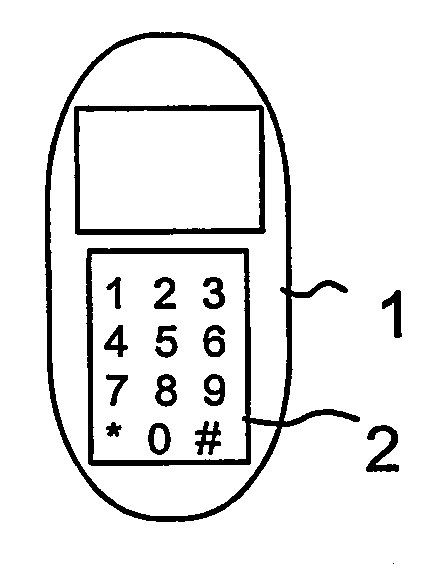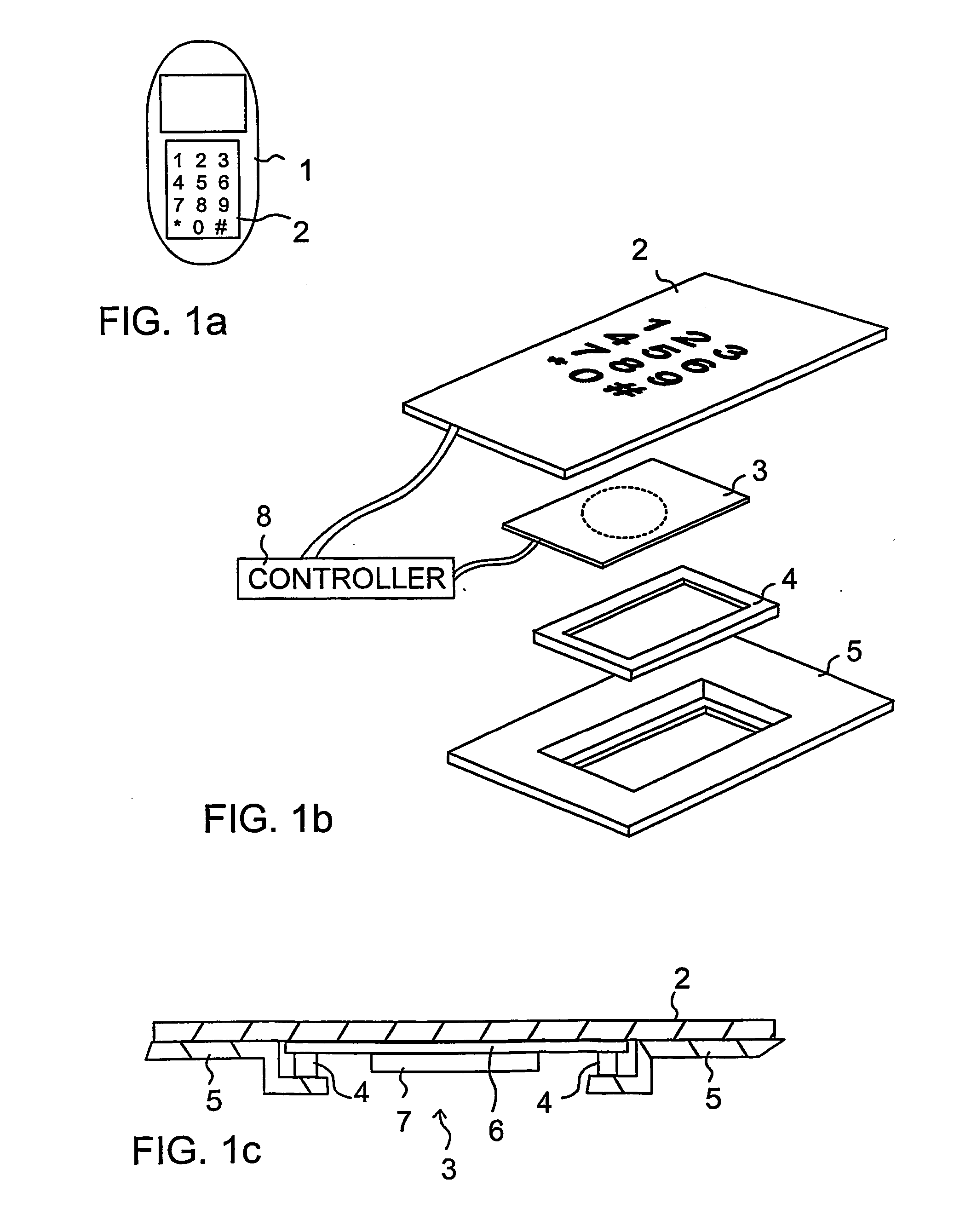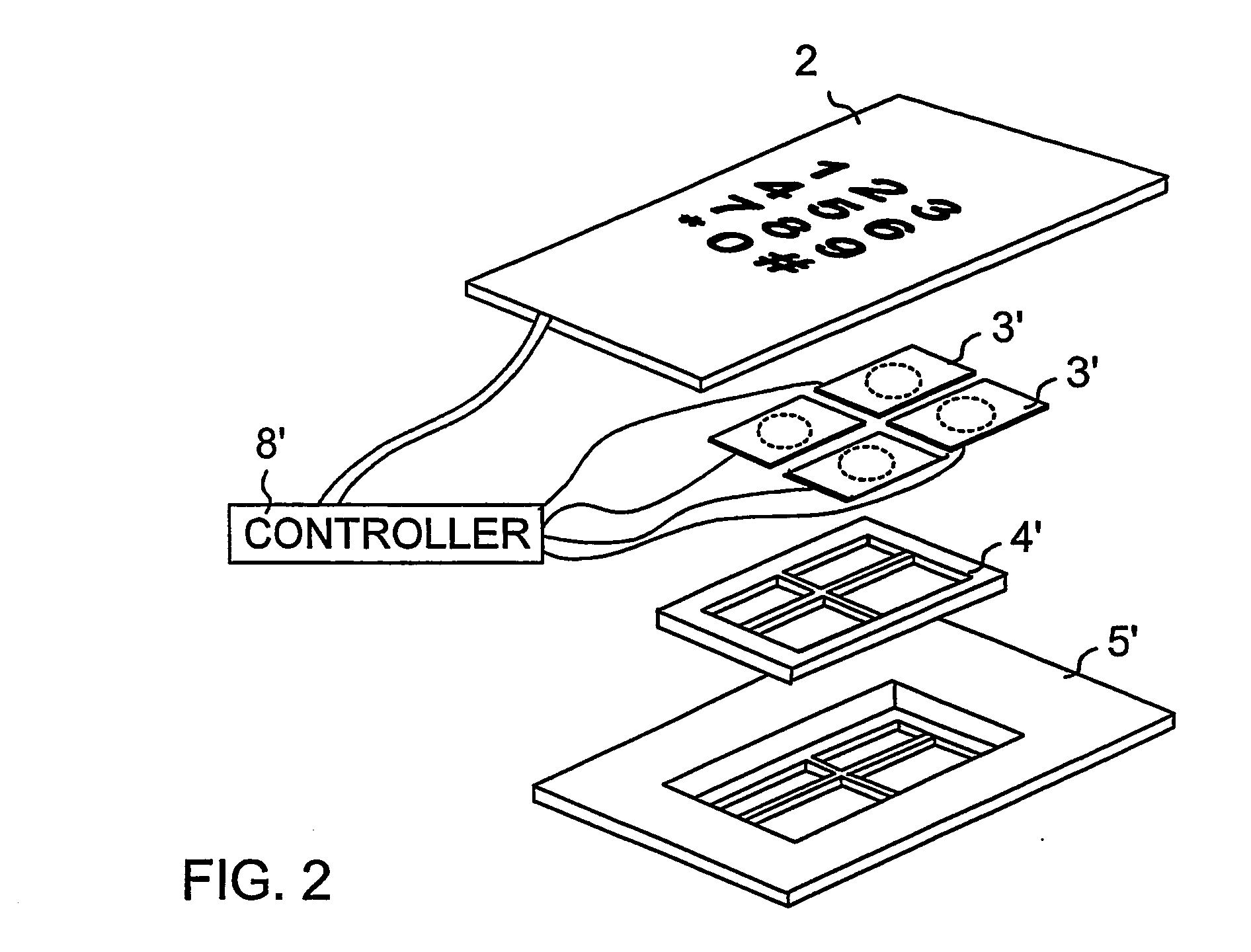Piezoelectric user interface
a user interface and piezoelectric technology, applied in the field of piezoelectric user interfaces, can solve the problems of annoying “beep” generated in connection with each keystroke, the space required by the mechanism, and the large amount of space required by the mechanism, and achieve the effect of improving the means of generating tactile feedback
- Summary
- Abstract
- Description
- Claims
- Application Information
AI Technical Summary
Benefits of technology
Problems solved by technology
Method used
Image
Examples
Embodiment Construction
[0028]FIGS. 1a to 1c illustrate a first preferred embodiment of the invention. The apparatus 1 in the example of FIGS. 1a to 1c is a media terminal comprising means for establishing telecommunication connections. These means include a radio transmitter and a radio receiver for establishing, for instance, phone calls via a cellular mobile communication system. The mobile communication system may be, for instance, a GSM system (Global System for Mobile communications) or a third generation mobile communication system.
[0029]FIG. 1a shows an apparatus comprising a keypad 2 and a display. FIG. 1b shows an exploded view of parts associated with the keypad 2 of the apparatus 1 in FIG. 1a, and FIG. 1c shows a sectional view of the parts in FIG. 1b. The keypad 2 is a flexible membrane keypad which may consist of one layer (as shown in the FIGS. 1b and 1c) or of several cooperating layers. The locations of the keys are visible on an upper side of the keypad 2. When a user presses one of the ...
PUM
 Login to View More
Login to View More Abstract
Description
Claims
Application Information
 Login to View More
Login to View More - R&D
- Intellectual Property
- Life Sciences
- Materials
- Tech Scout
- Unparalleled Data Quality
- Higher Quality Content
- 60% Fewer Hallucinations
Browse by: Latest US Patents, China's latest patents, Technical Efficacy Thesaurus, Application Domain, Technology Topic, Popular Technical Reports.
© 2025 PatSnap. All rights reserved.Legal|Privacy policy|Modern Slavery Act Transparency Statement|Sitemap|About US| Contact US: help@patsnap.com



